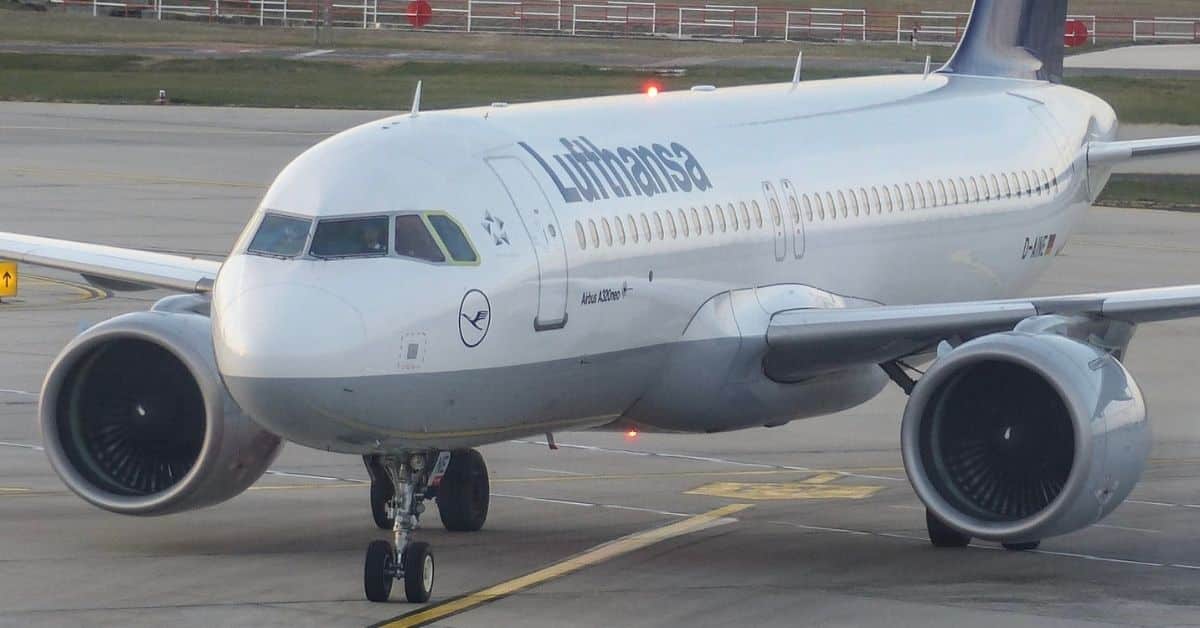Perhaps one of the most important metrics for measuring capability and performance, the fuel consumption of an aircraft is a primary factor in fleet selection. With a strong push for reducing carbon emissions and minimizing operating costs, airlines seek aircraft which are fuel-efficient.
A320 Fuel Burn Per Hour
The A320 Current Engine Option (CEO) burns approximately 2 and a half tonnes of Jet A-1 fuel per hour. This equates to approximately 5 gallons per seat on an hourly basis. These figures are representative of the A320 fuel burn while in the cruise phase of flight. Fuel burn experienced during the take-off phase is exponentially more.
The figure given above will fluctuate based on the load factor of the Airbus A320. Factors affecting fuel consumption include weather, cruise altitude, payload, and engine type (CFM56 or IAE V2500 on A320).
A320 Fuel Capacity
The fuel tank of an Airbus A320 can hold up to 24.2 tonnes of fuel. This figure includes all tanks (wing and center) being fully fuelled.
Generally, the center tank is utilized only for longer flights, in which the wing tanks have reached full capacity. The center tank greatly increases the aircraft’s range due to the increased fuel capacity.
A320 Sharklets Fuel Burn Performance
An A320 equipped with sharklets has the benefit of reduced fuel consumption. Despite increasing drag and weight, sharklets have the advantage of reducing induced drag, which is generally caused by lift.
As a result, this minimizes fuel consumption. Fuel consumption is reduced by approximately 2-4% when an aircraft is fitted with sharklets.
This is particularly advantageous on longer flights where the total fuel burned is higher than that of shorter flights. In order to obtain this efficiency, many airlines have retrofitted A320s with sharklets.
Airbus A320 NEO Fuel Burn
Equipped with LEAP 1 engines, the Airbus A320NEO is an enhanced version of the existing Airbus A320 CEO aircraft. With more fuel-efficient and quieter engines, the Airbus A320NEO fuel burn is significantly less to that of its predecessor. The A320NEO offers a 15% decrease in fuel burn over the Airbus A320CEO aircraft. The aircraft by default is also fitted with sharklets which further increases the fuel efficiency of the aircraft.
With these statistics in mind, the necessity for more fuel-efficient aircraft is apparent. While fuel efficiency benefits the airline, it also assists in reducing carbon emissions. This also potentially reduces the cost of flights for passengers as airlines can compete at lower fares due to lower operating costs.
While the A320ceo offers airlines with efficient fuel consumption performance, the A320neo has further improved operating margins due to a combination of both the CFM LEAP 1 engines and sharklets.
Read More:
Can an A320 Fly Over The Atlantic? | Narrowbody Transatlantic Operations
Can Planes Land in Zero Visibility? | Aircraft Autoland
Airbus Detents and Autothrust (A/THR) System

After visiting more than 60 countries, I have probably been on every type of plane there is and visited countless airports. I did my very first international solo trip to South Africa at the age of only 16 and haven’t really stopped traveling since.
Despite the adventurous travel itch, I do have a nerdy side as well – which is satisfied by writing about all things aviation “too boring” for my regular travel blog.

